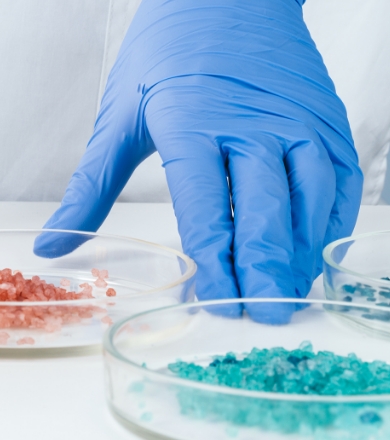Your contact
PENPET-Team - Hamburg

Tim Meister
Sales
Tel. +49 (0) 40 - 675 7 99 40
sales@penpet.de
Get in touch with us.
Adipic Acid
As an organic compound with two carboxy groups, Adipic Acid belongs to the dicarboxylic acids and is the most industrially used substance in this group. The substance is mainly used in the chemical industry as a starting material for the production of nylon. Adipic acid can be obtained in various technical processes. These include a two-stage oxidation process from cyclohexane via cyclohexanol and cyclohexanone, production from furfural and the intermediate product furan, and the hydrocarboxylation of butadiene. Adipic acid occurs naturally in small amounts in raspberries, papayas, guavas, beetroot, sugar beets and pork fat.
Adipic acid is used extensively in the production of nylon. For this purpose, the compound is condensed with hexamethylenediamine with elimination of water. In addition, adipic acid is used as a starting material for the production of rigid and flexible foams and elastomers from polyurethane. In addition, the plastics industry uses high-boiling adipic acid esters such as diethylhexyl adipate as plasticizers. These are used, among other things, in products made of polyvinyl chloride (PVC). As a food additive E355, adipic acid serves as an acidifier and substitute for tartaric acid in lemonade and baking powder. The chemical industry uses salts of the compound to synthesize cyclopentanone and other substances. In addition, adipic acid is used as a pH buffer in flue gas desulfurization.
At PENPET you can order the required amount of adipic acid in an uncomplicated and sustainable way. We look forward to receiving your inquiry for an individual offer. Delivered as a solid in sacks of 25 kg and in Big Bags with filling weights according to customer requirements.
CAS no. 124-04-9
EINECS no. 204-673-3
Molecular formula: C6H10O4
Synonyms: E 355, 1,4-dicarboxylic butane, 1,4-butanedicarboxylic acid, hexanedioic acid, 1,6-hexanedioic acid, adipic acid, acifloctine
Areas of application: Starting material for the production of nylon and polyurethanes, used as a plasticizer, dye, adhesive, insecticide and acidifier, additive in flue gas desulfurization
More Information
The structure of adipic acid is expressed in the synonymous name hexanedioic acid. The molecules of the compound consist of a regular hexane structure, each of whose terminal carbon atoms has a carboxylic acid group. Thus, adipic acid has a functional group at both ends of its linear molecular structure and is thus suitable as a starting material for polymerization reactions. For example, the compound can be condensed with hexamethylenediamine, which also has a symmetrical structure, to form long-chain nylon fibers by always connecting a carboxylic acid group and an amino group with elimination of water.
Adipic acid is a colorless to white solid that exists as monoclinic crystals under normal conditions. The compound is odorless but has a sour taste. Adipic acid has a pH of 2.7 and is corrosive in aqueous solution.
The solubility of adipic acid in water depends on its temperature. The compound is only poorly soluble in cold water, but readily soluble in warm water and very readily soluble in strongly heated water. Adipic acid can also be mixed to varying degrees with organic solvents. While it is hardly soluble in petroleum ether and benzene and only slightly soluble in cyclohexane, the compound can be dissolved well in acetic acid and acetone and even very well in ethanol and methanol.
Under normal storage conditions, adipic acid is a stable solid, but will decompose on contact with strong oxidants and ammonia. The substance is basically flammable, but is difficult to ignite. Substances that are hazardous to health are produced when adipic acid is burned. In particular, large amounts of carbon monoxide are released.
Dust explosions are possible when adipic acid is in the form of a very fine powder and large amounts of dust are stirred up. The substance should therefore always be stored in an airtight container. Opened containers should be kept away from sources of ignition such as sparks, open flames, electrostatic discharge and hot surfaces.
Like other carboxylic acids, adipic acid has an irritating and drying effect on the skin. Chemical burns are possible. Direct eye contact can cause serious eye damage. Sufficient face protection is therefore required when handling the compound. After contact, the affected parts of the body should be rinsed with plenty of water and medical help should be sought. Inhalation of adipic acid vapors may cause irritation of the mucous membranes of the nose, throat and lungs, as well as coughing and asthmatic reactions.
Adipic acid is considered to be slightly hazardous to water and must not be allowed to enter the sewage system, surface water or the soil.
